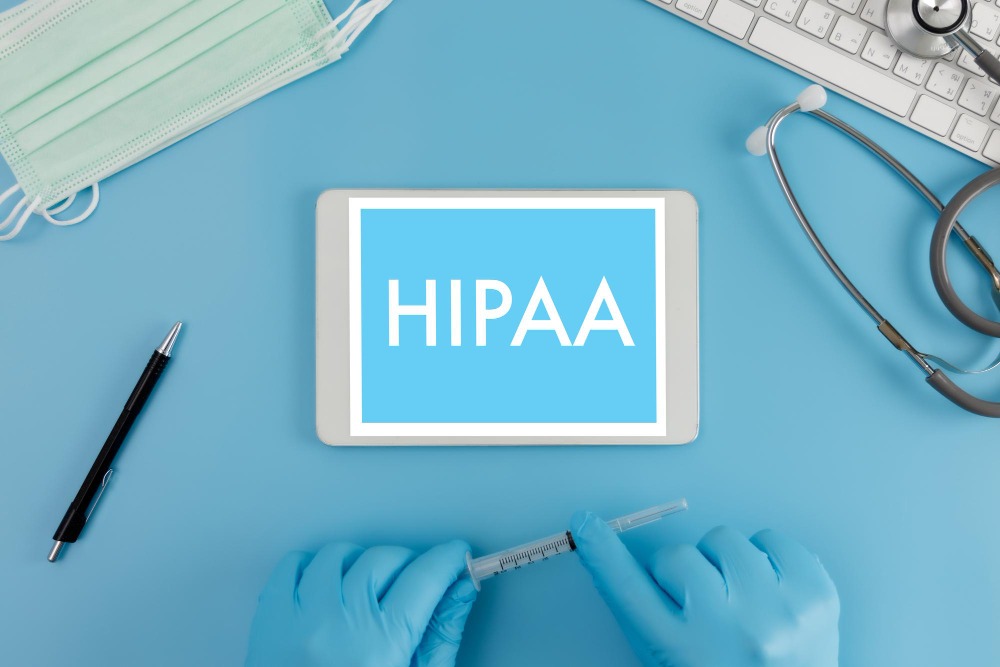Imagine a healthcare company preparing to scale its HIPAA compliant application as user demand grows and services expand. The current platform, MedStack, has supported HIPAA compliance and streamlined data management. However, the business now needs greater flexibility, scalability, and access to a broader range of cloud services, which AWS can provide.
This transition is not without challenges. Data security during migration, the risk of downtime, re-establishing compliance controls, and managing cloud costs are major concerns. In addition, finding the right expert can be difficult. The migration requires not only cloud expertise but also a deep understanding of HIPAA regulations, healthcare data protection, and secure cloud architecture.
At Mallow Technologies, our certified AWS engineers provide tailored DevOps services to support secure and seamless cloud migrations. We specialize in migrating HIPAA compliant applications while maintaining strict regulatory adherence throughout the process. With over a decade of experience, we have consistently helped clients optimize cloud costs, achieving savings of more than 40 percent and over $25,000 per month across several projects. By applying proven best practices and automation, we enhance operational efficiency while safeguarding data integrity and compliance.
By the end of this article, you will gain practical insights into successfully migrating a HIPAA compliant application from MedStack to AWS with confidence and clarity.
You will gain insights about:
✅ the crucial steps involved in the migration process, ensuring compliance and data integrity throughout.
✅ potential challenges, such as data security and downtime, and how to effectively address them.
✅ how to make informed decisions regarding cloud infrastructure and selecting the right experts, maximizing AWS’s capabilities to enhance your healthcare services.
What are some key considerations to look into before migrating your HIPAA-compliant application from MedStack to AWS?
When migrating a HIPAA compliant application from MedStack to AWS, it is important to carefully evaluate key factors that influence the success of the transition. These include meeting compliance requirements, ensuring strong data security, and minimizing the risk of operational disruptions. Addressing these areas early helps ensure a smooth migration while maintaining application stability and regulatory compliance.
Assess current application architecture

Start by gaining a thorough understanding of your existing infrastructure hosted on MedStack. This includes how data is stored, the dependencies between systems, third-party integrations, and the current measures in place to maintain HIPAA compliance. Having a clear view of the current architecture will help you select the most appropriate AWS services and define an effective migration strategy. According to the National Institute of Standards and Technology (NIST), architectural clarity plays a critical role in successful cloud migration planning and strengthening security postures.
Determine compliance requirements
Clearly define your compliance requirements. Review your organization’s specific HIPAA obligations, including any additional safeguards required to protect Protected Health Information (PHI). While AWS provides the flexibility to configure services to meet HIPAA standards, understanding your internal compliance needs is essential. The U.S. Department of Health and Human Services (HHS) highlights that conducting a risk analysis is a core requirement of HIPAA compliance, and organizations must evaluate potential vulnerabilities before migrating PHI to a cloud environment.
Establish a migration strategy
Choose a migration strategy that aligns with your operational goals:
- Rehosting (“Lift and Shift”) – Directly moving your application from MedStack to AWS without significant changes.
- Re-platforming – Making minimal adjustments to optimize performance on AWS.
- Refactoring – Redesigning and optimizing the application to fully leverage AWS-native services like Lambda or ECS.
How can you effectively prepare for migrating your HIPAA-Compliant application from MedStack to AWS?
Step – 1 – Select the right AWS services

Choosing the correct AWS services ensures your environment remains compliant, scalable, and efficient. For example, AWS has published a HIPAA-eligible services list, which includes EC2, RDS, S3, and more, ensuring healthcare workloads align with regulatory requirements. Consider the following:
- Amazon EC2 – Provides scalable compute capacity, allowing for the deployment of healthcare applications with proper security configurations.
- Amazon RDS – Offers managed relational databases with encryption, automated backups, and multi-AZ deployment for high availability.
- Amazon S3 – Secure object storage with strong encryption mechanisms (both in transit and at rest) to protect sensitive healthcare data.
Step – 2 – Set up a HIPAA-Compliant environment
- Business Associate Agreement (BAA) – AWS provides a BAA, outlining shared responsibility for compliance. Signing this agreement is mandatory for HIPAA-regulated workloads.
- Networking and security – Configure a secure Virtual Private Cloud (VPC), with public and private subnets, security groups, and network access controls to isolate resources and ensure secure communication.
- Data encryption – Encrypt data at rest using AWS Key Management Service (KMS) and use SSL/TLS encryption for data in transit.
Step -3 – Implement Identity and Access Management (IAM)
Identity and access control is crucial in a healthcare application to maintain compliance. Key considerations include:
- Implementing least privilege access policies, ensuring each user or system has the minimum access needed to perform their role.
- Multi-Factor Authentication (MFA): Mandatory for all users accessing AWS to add an additional layer of security.
What does the migration process involve for your HIPAA-Compliant application from MedStack to AWS?
Migrating a HIPAA compliant application from MedStack to AWS involves several important stages, including planning, secure data transfer, compliance validation, and system testing. Following a structured migration approach helps ensure that sensitive patient data remains protected and compliant throughout the transition.
A carefully planned process reduces the risk of downtime and operational disruptions, allowing your organization to take full advantage of AWS scalability and flexibility. In addition to improving data security, a well-defined migration strategy also makes future updates, maintenance, and performance optimization easier. This ultimately supports more efficient and reliable healthcare services.
Step – 1 – Data migration
- Data Transfer Tools: Use AWS tools like AWS Data Migration Service (DMS) to securely transfer large datasets from MedStack to AWS, ensuring PHI is encrypted during transfer.
- Validation: Perform a thorough validation of data integrity and security once transferred. Ensure that all PHI is encrypted as per HIPAA guidelines.
Step – 2 – Application migration

- Lift and shift (Rehosting) – For simple applications, deploy existing workloads onto EC2 instances and ensure configurations, dependencies, and security controls are properly set.
- Refactoring – For more complex environments, consider refactoring the application to use AWS-native services, such as Amazon ECS for containerized environments or AWS Lambda for serverless compute.
Step – 3 – Testing and validation
- Functional testing – Ensure the application functions as expected in the new environment. Verify that all workflows, user interfaces, and background processes are intact.
- Security testing – Conduct rigorous security assessments, including vulnerability scans and penetration tests, to identify and mitigate potential security risks in the AWS environment. Utilize AWS Config to map HIPAA controls to specific AWS resources, enabling continuous compliance monitoring and automated remediation of non-compliant configurations.
What are the best practices to follow after migrating your HIPAA-Compliant application to AWS?
- Monitoring and auditing
Utilize AWS CloudTrail to log all API calls, ensuring a comprehensive audit trail of activities that interact with ePHI. AWS CloudWatch can be used for real-time monitoring and alerting of key system metrics, allowing you to identify and address issues before they affect users or security. - Regular security assessments
Perform regular security audits and vulnerability assessments. AWS Trusted Advisor can provide insights into security best practices, while third-party tools can further enhance your security posture.
- Documentation and training
Document the entire migration process, including decisions made regarding compliance, architecture, and security. Training staff on the updated processes and AWS environment ensures ongoing compliance and efficient operations.
What are some of the key factors to consider while while outsourcing DevOps consulting services
As you move forward with migrating your HIPAA compliant application from MedStack to AWS, it is natural to face challenges related to compliance, data security, and cloud migration complexity. This article has outlined the migration process, highlighted key considerations, and shared best practices to help your organization manage this transition with confidence.
Understanding these aspects is essential for reducing risk and fully leveraging the scalability, flexibility, and service breadth that AWS offers. With this foundation in place, the next step is to evaluate DevOps partners who can support your migration journey. Choosing the right partner is critical to maintaining regulatory compliance, protecting sensitive data, and ensuring a smooth and secure transition both during and after the migration. By taking into account the key factors to consider while outsourcing DevOps services mentoined in this linked article, you will be better positioned to make an informed choice that aligns with your specific requirements and objectives.
Unsure about your first step for migrating your HIPAA-compliant application? Let our team of experts guide you through the process and help you make informed decisions.
Your queries, our answers
DevOps is a methodology that integrates development and operations teams to enhance collaboration and efficiency throughout the software development lifecycle. By promoting practices like continuous integration and continuous delivery (CI/CD), DevOps accelerates release times and improves software quality.
You should consider implementing DevOps when your projects are experiencing increasing complexity, frequent releases, quality and stability issues, or when there's a need for better cross-functional collaboration. DevOps is also ideal when you face scalability challenges or need to respond quickly to market demands.
For more details, get in touch with our team.
Security is a critical aspect of Mallow’s DevOps consulting services. We integrate security measures throughout the DevOps pipeline, using practices like automated security testing, continuous monitoring, and compliance checks. This ensures that your software remains secure without compromising speed or quality.
Automation is central to DevOps, enabling faster and more reliable software deployments. It involves automating repetitive tasks like code testing, integration, and deployment, which reduces errors, enhances efficiency, and allows your team to focus on innovation.
Key DevOps tools include version control systems, CI/CD pipelines, containerization platforms, and monitoring tools like Git, Jenkins, Docker, and Prometheus. Mallow provides comprehensive training and support to ensure your team is proficient in using these tools effectively.
A key practice of DevOps is Continuous Integration and Continuous Delivery (CI/CD). CI/CD involves the frequent integration of code changes into a shared repository and automating the deployment process. This practice helps in detecting issues early, improving software quality, and speeding up release cycles. By automating the testing and deployment phases, CI/CD ensures that software updates are delivered quickly and reliably.
Mallow offers ongoing support after the initial implementation of DevOps practices. This includes monitoring, troubleshooting, and continuous optimization to ensure your DevOps environment remains efficient, secure, and aligned with your business goals.
DevOps consulting services help streamline your software development processes, reduce time-to-market, and increase software reliability. By adopting DevOps practices, your organization can improve cross-functional collaboration, automate workflows, and enhance overall operational efficiency.
To learn how these practices can specifically benefit your application development, check out our insights on the value DevOps companies bring to the process.
Mallow’s DevOps consulting process involves assessing your current practices, identifying areas for improvement, and guiding your team through the adoption of DevOps methodologies. We offer tailored solutions, continuous support, and training to ensure successful DevOps implementation and long-term benefits.Check out how our DevOps consulting services can streamline your software development processes and improve efficiency
Yes, DevOps can be highly beneficial for small and medium-sized businesses. It helps streamline processes, improve software quality, and reduce time-to-market, giving smaller organizations a competitive edge. Mallow tailors its DevOps consulting services to meet the specific needs of businesses of all sizes.
Mallow stands out for its expertise, collaborative approach, and commitment to continuous improvement. With over 5 years of dedicated experience in DevOps, our team provides customized solutions that drive efficiency, innovation, and reliability in your software development processes.
To know more, get in touch with our experts.
Yes, Mallow provides migration services to help transition your existing projects to a DevOps environment. We assess your current setup, plan the migration strategy, and ensure a smooth transition with minimal disruption to your operations.
The main purpose of DevOps is to bridge the gap between development and operations teams to enhance collaboration and streamline the software development lifecycle. By integrating processes and automating workflows, DevOps aims to accelerate the delivery of software, improve quality, and increase operational efficiency. This approach supports continuous development and deployment, leading to faster innovation and more reliable software solutions.
Mallow prioritizes continuous improvement by monitoring key performance metrics, gathering client feedback, and iteratively optimizing strategies. We also promote a culture of experimentation and learning, ensuring your DevOps practices evolve and improve over time.
Author
Jayaprakash
Jayaprakash is an accomplished technical manager at Mallow, with a passion for software development and a penchant for delivering exceptional results. With several years of experience in the industry, Jayaprakash has honed his skills in leading cross-functional teams, driving technical innovation, and delivering high-quality solutions to clients. As a technical manager, Jayaprakash is known for his exceptional leadership qualities and his ability to inspire and motivate his team members. He excels at fostering a collaborative and innovative work environment, empowering individuals to reach their full potential and achieve collective goals. During his leisure time, he finds joy in cherishing moments with his kids and indulging in Netflix entertainment.



